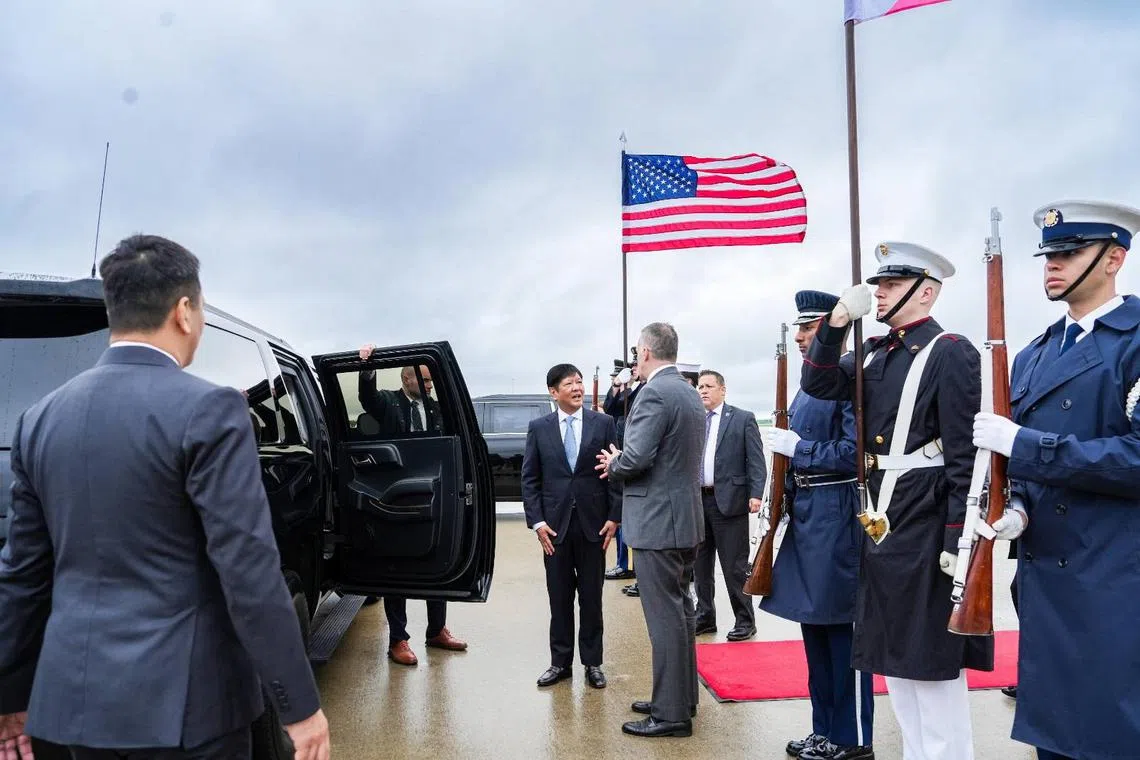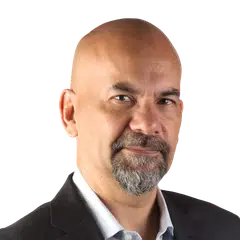Philippines’ Marcos in Washington as US intensifies engagement, deterrence in Indo-Pacific
Sign up now: Get ST's newsletters delivered to your inbox

Philippines' President Ferdinand Marcos Jr arriving in Washington DC on April 30.
PHOTO: PHILIPPINE PRESIDENTIAL COMMUNICATIONS OFFICE/FACEBOOK
Follow topic:
WASHINGTON - Philippine President Ferdinand “Bongbong” Marcos Jr arrived in Washington on Sunday as the United States intensifies high-level engagements with Indo-Pacific countries, upping its diplomatic game – and its deterrence – across the region.
“We’re in a deeply consequential period in terms of our Indo-Pacific engagement with allies and partners,” a senior US official told journalists on Sunday.
Just days before Mr Marcos’ trip, his government accused China of “aggressive tactics” and “dangerous manoeuvring”
Essentially, much larger Chinese Coast Guard vessels had chased off smaller Philippine Coast Guard patrols,
That elicited a warning last Saturday from the US State Department that analysts noted for its explicit wording.
“An armed attack in the Pacific, which includes the South China Sea, on Philippine armed forces, public vessels, or aircraft, including those of the Coast Guard, would invoke US mutual defence commitments under… the 1951 US Philippines Mutual Defence Treaty,” the statement said.
Separately, the US and the Philippines have just wound up their largest annual Balikatan military exercise,
The senior official, one of two who briefed the media, on Sunday said there is a “greater focus in both capitals on taking the necessary steps to up our game to improve engagement on the security side between the United States and the Philippines”.
The Philippines is also engaging actively with Japan and other countries in the Indo-Pacific, given their changing circumstances, the senior official said.
Continuing provocative acts on the part of China, testing and probing in Philippine waters, were of deep concern to the Philippines and “they’re looking for reassurance to maintain peace and stability in this complex period”, the senior official said.
“The Chinese have taken some steps that have been really concerning to the Philippine leadership,” the senior official noted, citing as well a recent speech by China’s Ambassador to the Philippines Huang Xilian, which seemed to warn of the safety and security of the nearly 200,000 Filipinos living in Taiwan, if there were to be a war over the island.
“President Marcos… has, I think, a strong desire to work closely with both countries, but finds himself in a situation that the steps China is taking are deeply concerning.
“This coming week is meant in many respects to diversify what we think are very important initial security engagements of the last several months,” the senior official said.
These include an agreement in early April to base more American troops in the Philippines
The second senior official said, in terms of specific outcomes: “We’re looking forward to announcing a new set of bilateral defence guidelines that will deepen our lines of cooperation and interoperability across operational domains including land, sea, air, space and cyberspace.”
The senior official outlined a series of steps to support the modernisation of the Armed Forces of the Philippines, including the transferring of three C-130 military transport aircraft.
“Also, we’ve transferred a number of cyclone class coastal patrol vessels that are on their way to the Philippines now,” the official said.
“Our view is, these transfers will support the Armed Forces of the Philippines modernisation programme by significantly enhancing its maritime tactical lift capacity,” he said, adding that additional patrol vessels would be transferred.
On economic ties, the US will be announcing a trade and investment mission to the Philippines to “enhance US companies’ investments in the Philippines’ innovation economy, its clean energy transition and critical mineral sector, and the food security of its people”.
In a pre-departure statement, Mr Marcos told reporters that the Philippines would push for greater economic engagement
He said that he would reaffirm Manila’s “commitment to fostering our longstanding alliance as an instrument of peace and as a catalyst of development in the Asia-Pacific region”.
Mr Marcos’ visit comes just days after South Korean President Yoon Suk-yeol left Washington with, among other things, a decision to deploy a US nuclear submarine
Later this month, US President Joe Biden will be in Hiroshima, Japan, for the May 19 to 21 Group of Seven summit, where he will have a trilateral meeting with Japan and South Korea.
Then he heads to Sydney, Australia, for the May 24 summit of the Quad, which groups Australia, India, Japan and the US.
On the way there, on May 22, Mr Biden will stop by Papua New Guinea
The trip has not been confirmed by the American side, but Papua New Guinea Prime Minister James Marape announced it on Sunday.
Indian Prime Minister Narendra Modi will also be at the Papua New Guinea meeting and will again meet Mr Biden at the Quad summit in Sydney, as well as visit Washington in June.
“We need to accelerate our catch-up,” Mr Joseph Yun, Special Presidential Envoy for Compact Negotiations, told the Hudson Institute in Washington last week.
“Any high-level engagement is welcome,” he said.
“Let’s face it, it is strategic competition between China and us.
“Have we neglected the Pacific? The answer is yes, we have neglected the Pacific and… we are trying to correct that quite a bit,” he added.


